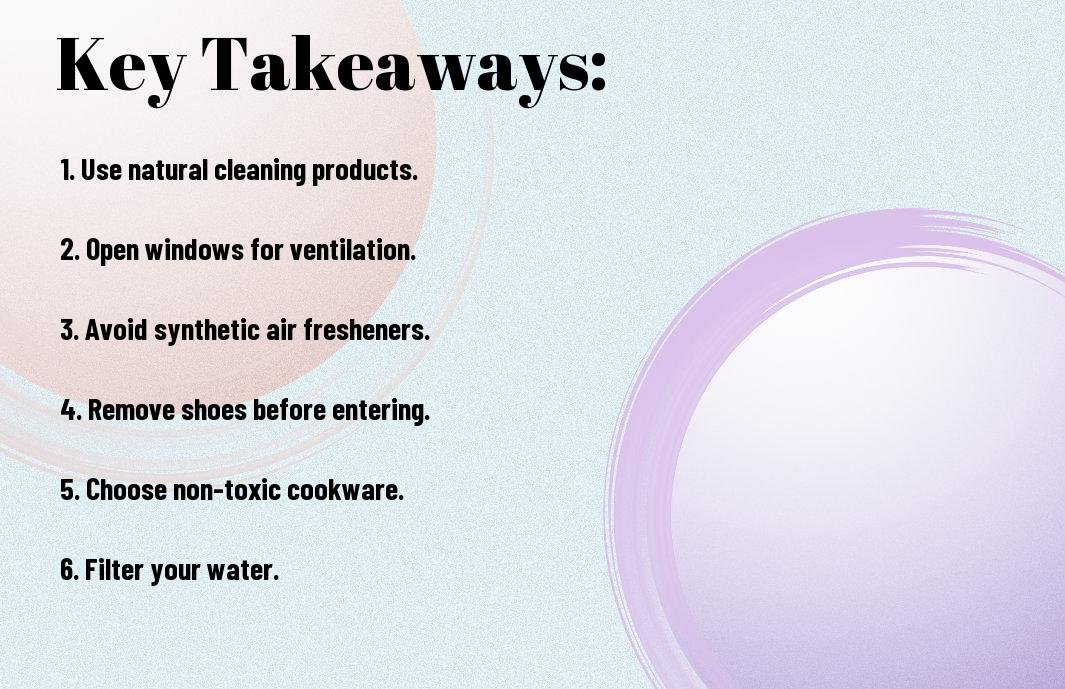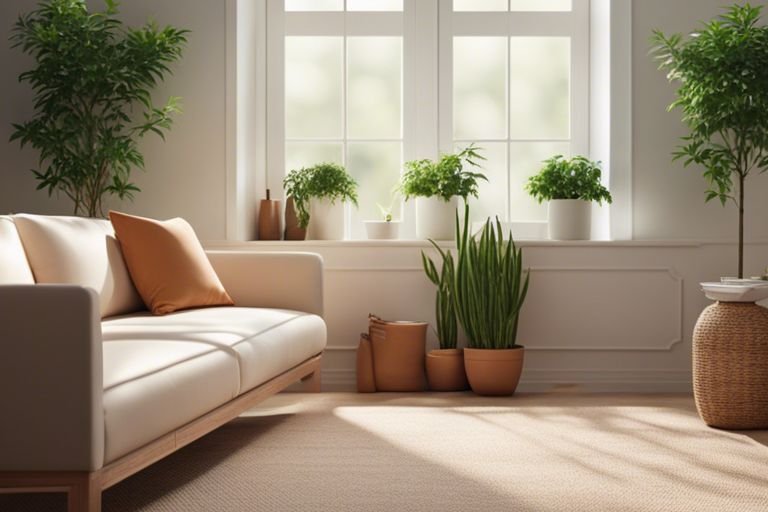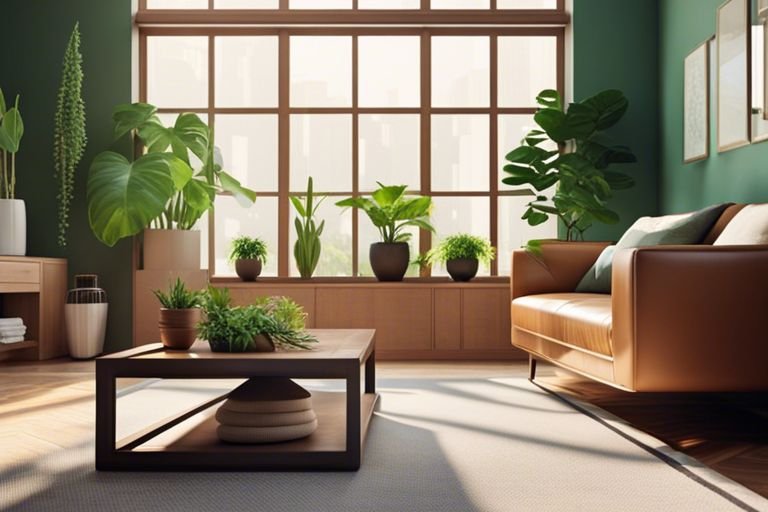Most households unknowingly harbor harmful environmental toxins that can impact our health and the planet. In this guide inspired by Rachel Carson’s advocacy, we explore simple yet effective ways to reduce these toxins in your living space. By making small changes in daily habits and choosing eco-friendly alternatives, we can create a safer, healthier home environment for ourselves and future generations.
Table of Contents
Key Takeaways:
- Choose Non-Toxic Cleaning Products: Opt for natural or homemade cleaning solutions to reduce exposure to harmful chemicals.
- Improve Indoor Air Quality: Use air purifiers, open windows for ventilation, and add indoor plants to help filter out toxins.
- Switch to Organic Bedding: Invest in organic mattresses, sheets, and pillows to avoid flame retardants and other chemicals used in conventional bedding.
- Avoid Plastic Containers: Use glass or stainless steel containers instead of plastic to minimize exposure to harmful chemicals like BPA.
- Filter Drinking Water: Use a water filter to remove contaminants like lead, chlorine, and pesticides from your tap water.

Identifying Sources of Environmental Toxins
Before implementing strategies to reduce environmental toxins in your home, it is crucial to identify and understand the sources of these harmful substances. By recognizing where toxins lurk, you can take proactive steps to minimize exposure and create a healthier living environment for you and your loved ones.
Common Household Chemicals
On the surface, many everyday products may seem harmless, but common household chemicals like bleach, ammonia, and air fresheners can release harmful pollutants into the air. These substances can irritate the respiratory system, trigger allergic reactions, and contribute to indoor air pollution.
Hidden Toxins in Cleaning Products
Common cleaning products often contain a variety of hidden toxins that can have detrimental effects on both human health and the environment. Even products labeled as “green” or “natural” may contain ingredients that are harmful when inhaled or come into contact with the skin.
Hidden toxins in cleaning products can include volatile organic compounds (VOCs), phthalates, and synthetic fragrances. These substances have been linked to respiratory issues, hormonal disruptions, and even cancer. To reduce exposure to these harmful chemicals, opt for eco-friendly, non-toxic alternatives or make your own cleaning solutions using simple ingredients like vinegar, baking soda, and imperative oils.
Simple Swaps for a Toxin-Free Home
Natural Alternatives to Chemical-Based Cleaners
Little changes can make a big difference in reducing toxins in your home. Switching to natural alternatives for cleaning products is an easy and effective way to minimize exposure to harmful chemicals. Ingredients like vinegar, baking soda, and important oils can tackle dirt and grime without the use of harsh chemicals.
Eco-Friendly Pest Control Methods
With the alternatives to chemical pesticides, you can keep your home free from pests while safeguarding your family’s health and the environment. Consider using diatomaceous earth, important oils, or traps to manage pests without resorting to toxic chemicals. These methods are not only effective but also safe for your loved ones.

Detoxifying Your Kitchen
Many everyday products found in our kitchens can harbor environmental toxins. By making conscious choices about the items we use, we can create a healthier indoor environment for ourselves and our families.
Non-Toxic Cookware Options
Detoxifying your kitchen starts with selecting non-toxic cookware options. Traditional non-stick pans can release harmful chemicals when heated, so consider switching to ceramic, stainless steel, or cast iron cookware. Not only are these alternatives safer for your health, but they are also durable and can last a lifetime with proper care.
Safe Food Storage Containers
Your choice of food storage containers can also impact your exposure to toxins. Opt for glass or stainless steel containers instead of plastic ones. Plastic containers, especially those made with BPA, can leach harmful chemicals into your food and beverages over time. Investing in safer alternatives will benefit both your health and the environment.
Creating a Healthy Indoor Environment
Now 5 Ways to Reduce Toxic Exposures in Your Home can help you in creating a healthier indoor environment.
Improving Air Quality with Plants
Indoor plants not only add a touch of green to your living space but also help improve indoor air quality by removing toxins and producing oxygen. Some plants like peace lilies, spider plants, and aloe vera are excellent choices for purifying the air in your home.
Reducing Exposure to Volatile Organic Compounds (VOCs)
Environmentally friendly paint, furniture, and cleaning products can help reduce exposure to Volatile Organic Compounds (VOCs) in your home. VOCs are harmful chemicals that can off-gas from these products, contributing to indoor air pollution. Opt for low-VOC or VOC-free alternatives to create a safer environment for you and your family.
Plus, ensuring proper ventilation in your home can also help prevent VOC buildup. Opening windows, using exhaust fans, and investing in an air purifier with a HEPA filter are effective ways to reduce indoor air pollutants.

Toxic-Free Personal Care
Natural Skincare Routines
Your skin deserves the best care, why not switch to natural skincare routines? Natural ingredients like coconut oil, shea butter, and important oils can provide the nourishment your skin needs without harmful chemicals. Look for products that are free from parabens, sulfates, and synthetic fragrances to keep your skin healthy and glowing.
Safe Hair Care Products
Skincare is important, but don’t forget about your hair care products. Many conventional hair products contain ingredients like sulfates, parabens, and phthalates that can be harmful to your hair and scalp. Opt for organic and natural hair care products that will cleanse and nourish your hair without exposing you to unnecessary toxins.
Reducing Waste and Minimizing Exposure
Despite the convenience of modern living, our homes can harbor harmful toxins. To create a safer environment, consider implementing 10 Affordable Ways to Make Your Home Safer and Healthier. These simple changes can help reduce waste and minimize exposure to harmful chemicals.
Composting and Recycling Strategies
Reducing waste through composting organic materials and recycling paper, plastic, glass, and metal can significantly decrease the amount of garbage sent to landfills. Composting enriches the soil, reduces greenhouse gas emissions, and minimizes the need for chemical fertilizers.
Avoiding Single-Use Plastics
Avoiding single-use plastics is important for reducing environmental toxins in your home. These plastics can leach harmful chemicals like BPA into food and beverages, posing a risk to your health. Opt for reusable alternatives such as stainless steel water bottles, glass containers, and cloth grocery bags.
To further minimize exposure to toxins, choose products made from natural materials like organic cotton or bamboo instead of plastic. By making these small changes, you can create a healthier and more eco-friendly living space for you and your family.
Final Words
So, by implementing the ideas discussed in this article, we can take small but impactful steps towards reducing environmental toxins in our homes. Just like Rachel Carson, let us be stewards of our environment and strive to create a safer and healthier space for ourselves and future generations.
FAQ
Q: What are environmental toxins in the home?
A: Environmental toxins in the home are substances that are harmful to human health and the environment, often found in common household products or materials.
Q: Why is it important to reduce environmental toxins in your home?
A: It is important to reduce environmental toxins in your home to protect your health, the health of your family, and the environment. These toxins can contribute to various health problems and pollute the air, water, and soil.
Q: What are some common sources of environmental toxins in the home?
A: Common sources of environmental toxins in the home include pesticides, household cleaners, synthetic fragrances, mold, lead-based paint, and certain building materials like asbestos.
Q: How can I reduce environmental toxins in my home?
A: To reduce environmental toxins in your home, you can switch to natural cleaning products, improve ventilation, use air purifiers, reduce clutter, avoid products with synthetic chemicals, and regularly test for radon and other pollutants.
Q: What are some benefits of reducing environmental toxins in the home?
A: By reducing environmental toxins in your home, you can improve indoor air quality, reduce the risk of health problems like respiratory issues and allergies, create a safer living environment for your family, and contribute to a healthier planet overall.
Recent Posts
Revitalize your health with an innovative detox approach offered by Root Wellness. This powerful solution enhances wellness through natural ingredients like zeolite and silica, effectively cleansing...
Roots Clean Slate Erfahrungen Revitalize With Bioavailable Silicon
Revitalizing your health begins with a natural approach to removing harmful substances. Detoxification can pave the way for a more vibrant life through effective cleansing methods. Bioavailable...

